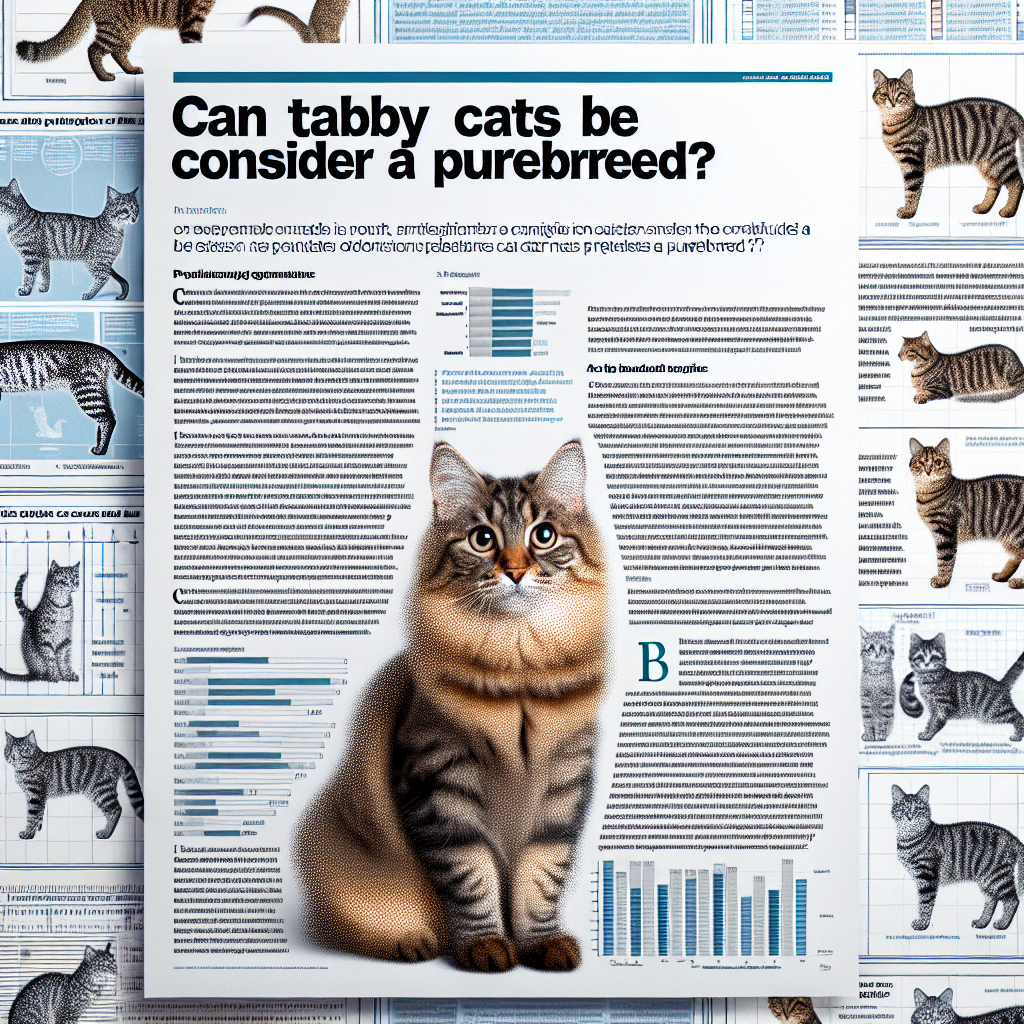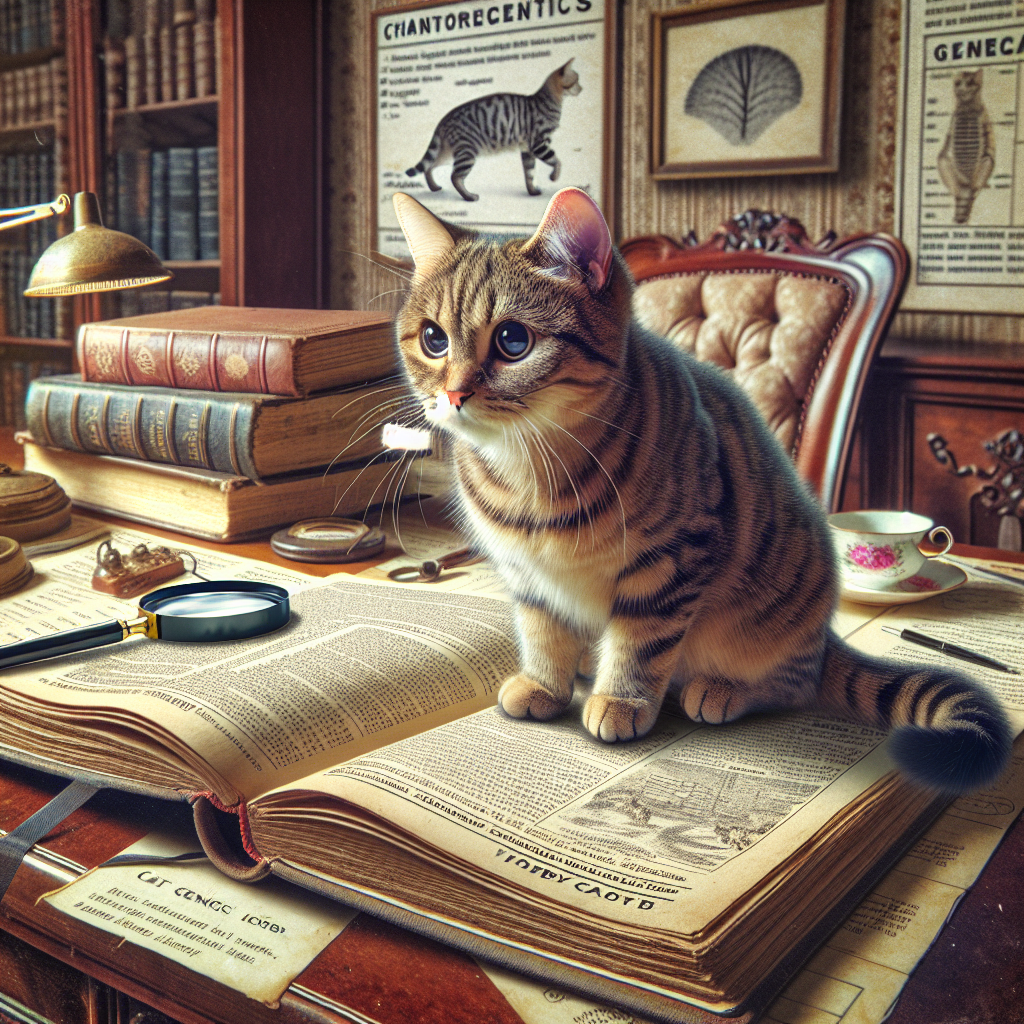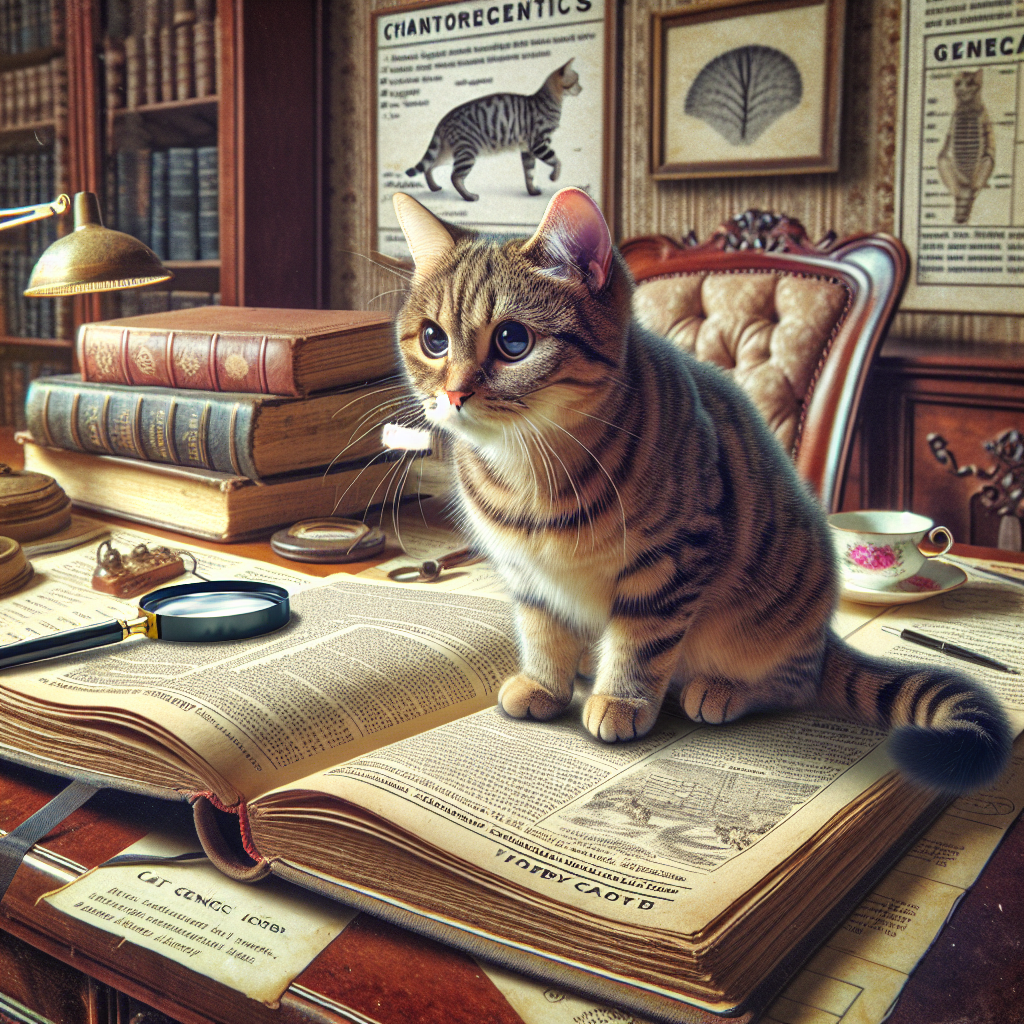Did you know that tabby cats are known for their distinctive coat patterns, but have you ever wondered if they are purebred? Tabby cats, with their beautiful striped or swirled markings, are often mistaken as their own breed. However, contrary to popular belief, tabby is not a breed, but rather a coat pattern that can be found in many different breeds. In this article, we will explore the fascinating world of tabby cats and discover whether or not they can be considered purebred. Get ready to unravel the truth behind these captivating felines!

What is a Tabby Cat?
Tabby cats are one of the most common and beloved types of cats. They are known for their distinct coat patterns, which consist of unique swirls, stripes, and spots. Tabby cats can come in various colors, including brown, gray, black, and even orange. Their coats are often accompanied by beautiful, expressive eyes that can be green, yellow, or amber. These cats have a domestic short-haired body structure, with a medium to large size and an elegant appearance. They are considered to be a wonderful addition to any family due to their friendly and affectionate nature.
Physical Characteristics of a Tabby Cat
Tabby cats have certain physical characteristics that set them apart from other cat breeds. Apart from their distinctive coat patterns, they have a strong and muscular body, with a well-developed bone structure. Their heads are round and proportionate to their bodies, with a slightly wedge-shaped profile. Tabby cats have prominent, expressive eyes that usually match the color of their coat. Their ears are alert and slightly pointed, giving them an attentive and curious appearance. These cats have a strong and agile physique, making them excellent hunters and climbers.
Personality Traits of a Tabby Cat
Tabby cats are known for their wonderful personalities and friendly demeanor. They are often described as affectionate and social. Tabby cats enjoy human company and are known to form strong bonds with their owners. They are often curious by nature and love to explore their surroundings. These cats are also known to be highly intelligent and can quickly adapt to new environments. They are often playful and enjoy interactive toys and games with their owners. Tabby cats have a reputation for being good with children and other pets, making them an ideal family pet.
Different Types of Tabby Patterns
Tabby cats come in a variety of unique coat patterns. The most common tabby pattern is the classic or blotched tabby, which features bold, swirling patterns on their sides and a distinctive “M” shape on their foreheads. Another popular pattern is the mackerel tabby, characterized by narrow, parallel stripes running from the spine to the belly. The spotted tabby pattern consists of smaller spots or rosettes scattered throughout the cat’s coat. Lastly, there is the ticked tabby pattern, also known as the Abyssinian pattern, which features agouti hairs that give the cat a uniformly colored appearance. Each tabby pattern is unique and adds to the charm and beauty of these cats.
Understanding Purebred Cats
Definition of Purebred Cats
Purebred cats are cats whose lineage can be traced back to a specific breed. Unlike mixed breed cats, purebred cats have specific characteristics that are consistent within their breed. To be considered purebred, a cat must have parents of the same breed and be registered with a recognized cat breed association or registry.
Characteristics of Purebred Cats
Purebred cats have specific breed standards that outline their physical appearance and characteristics. These standards are determined by cat breed associations and include details such as coat color and pattern, body structure, and eye color. Purebred cats are bred with the goal of preserving and maintaining these unique characteristics within their breed.
Purebred Cat Breeds
There are numerous purebred cat breeds, each with its own distinct features and personalities. Some popular purebred cat breeds include the Persian, Siamese, Maine Coon, Ragdoll, Bengal, and Abyssinian. Each breed has its own set of characteristics and traits that make them unique. Purebred cat breeds are often sought after by individuals looking for a specific type of cat that matches their preferences and lifestyle.
Tabby Cats and Purebred Status
Can Tabby Cats Be Purebred?
Yes, tabby cats can be purebred. While many people associate tabby cats with mixed breeds, it is possible for a cat with a tabby coat pattern to have purebred status. The coat pattern of a tabby is not exclusive to mixed breed cats and can be found in certain purebred cat breeds as well.
Importance of Pedigree for Purebred Status
To have purebred status, a cat must have a documented pedigree that traces its lineage back to its breed. Pedigrees are important in preserving the integrity of a breed and ensuring that the cat meets the breed standards. The pedigree provides evidence of the cat’s ancestry and verifies its purebred status.
Misconceptions about Tabby Cats’ Purebred Status
There is a common misconception that tabby cats cannot be purebred. This misconception stems from the fact that tabby coats are often associated with mixed breed cats. However, there are several purebred cat breeds that can have tabby coat patterns, including the Maine Coon, Abyssinian, and Bengal. It is essential to understand that the coat pattern alone does not determine a cat’s purebred status.

Factors Affecting Purebred Classification
Genetics and Parentage
Genetics play a crucial role in determining a cat’s purebred status. For a cat to be considered purebred, it must have parents of the same breed. The genetic makeup of a cat determines its physical characteristics and traits, which are specific to its breed. Through careful breeding practices and selection of appropriate mate, breeders aim to produce kittens that adhere to the breed standards.
Breeding Standards
Breed standards are guidelines set forth by cat breed associations that define the ideal physical characteristics and traits for each breed. These standards specify details such as coat color and pattern, body shape, and eye color. Breeders follow these standards when selecting cats for breeding to ensure that the offspring maintain the breed’s distinctive traits. Meeting these breeding standards is vital in classifying a cat as a purebred.
Registration and Documentation
To establish a cat’s purebred status, it must be registered with a recognized cat breed association or registry. These organizations maintain breed standards, keep pedigrees, and certify cats as purebred. Registration provides documentation and proof of a cat’s purebred status, which is an essential factor in determining its classification.
How Tabby Cats Are Bred
Types of Breeding Methods
Tabby cats can be bred through various methods, depending on their intended purpose and the preferences of the breeder. Breeding methods commonly used for tabby cats include natural breeding, selective breeding, and outcrossing. Natural breeding involves allowing cats to mate naturally, while selective breeding involves carefully selecting cats with desired traits for mating. Outcrossing, on the other hand, involves breeding a cat with another cat of a different breed to introduce new traits or improve existing ones.
Recognizing Purebred Tabby Kittens
Determining whether a tabby kitten is purebred can be challenging, especially if it does not come with proper documentation or registration. However, several factors can help identify a purebred tabby kitten. These include the physical characteristics that are specific to the breed, such as body structure, coat pattern, and eye color. Additionally, the reputation and credibility of the breeder can play a significant role in determining the kitten’s purebred status.
Ethical Considerations in Tabby Cat Breeding
Breeding tabby cats should be done responsibly and ethically. It is essential for breeders to prioritize the health and welfare of the cats and adhere to responsible breeding practices. They should ensure that the cats receive appropriate veterinary care, have a clean and safe living environment, and are well-socialized. Breeders should also be transparent in their practices and provide proper documentation to support the purebred status of the kittens they produce.
Identifying Purebred Tabby Cats
Physical Characteristics of Purebred Tabby Cats
Purebred tabby cats exhibit physical characteristics specific to their breed. These characteristics can include body structure, coat pattern, eye shape and color, and even specific facial features. For example, the Maine Coon breed is known for its large size, bushy tail, and tufted ears, while the Bengal breed is known for its distinctive spotted or marbled coat pattern.
Genealogy and Bloodline Documentation
To identify a tabby cat as purebred, it is important to have access to its genealogy and bloodline documentation. This documentation traces the cat’s lineage, verifying its purebred status. Pedigrees, registration certificates, and other official documents play a crucial role in establishing a cat’s breeding history and classification.
Breeder Certifications
Reputable breeders often have certifications or affiliations with recognized cat breed associations or clubs. These certifications ensure that the breeder follows ethical breeding practices and standards set forth by the breed associations. Choosing a breeder with proper certifications can help ensure the purity and quality of the tabby cat being purchased.
Challenges in Determining Purebred Status for Tabby Cats
Lack of Defined Standards for Tabby Cats
Unlike specific purebred cat breeds, there are no standardized breed standards for tabby cats as a whole. This can make it more challenging to determine their purebred status. Consequently, tabby cats may have variations in their appearance and characteristics, making it harder to classify them purely based on physical attributes.
Crossbreeding and Mixed Lineages
Crossbreeding and mixed lineages can complicate the determination of purebred status for tabby cats. If a tabby cat has ancestors of different breeds, it may not be considered purebred, even if it displays typical tabby coat patterns. Breeders must carefully track the ancestry of their cats and ensure that they adhere to the breed standards to maintain the purebred status.
Questioning the Importance of Purebred Status
While purebred status is significant for some individuals who are looking for specific traits or characteristics in a cat, it is essential to question its overall importance. Mixed breed cats, including tabby cats, have their own unique charm and qualities that make them beloved companions. Purebred status should not be the sole factor in deciding the value or desirability of a cat, as each cat can bring joy and love regardless of their breed.
Benefits of Owning a Purebred Tabby Cat
Predictable Traits and Temperament
One of the benefits of owning a purebred tabby cat is the predictability of their traits and temperament. Purebred cats are bred with the goal of maintaining specific characteristics within their breed. This can be appealing for individuals who have specific preferences in terms of a cat’s appearance, behavior, or activity level.
Health and Genetic Screening
Purebred cats often undergo health and genetic screening to ensure that they are free from hereditary or genetic diseases that are common within their breed. This provides reassurance to owners that their cat is healthy and reduces the risk of potential health problems in the future. Breeders typically prioritize the health and well-being of the cats they breed, contributing to the overall health of the breed.
Supporting Responsible Breeding
By choosing to own a purebred cat, individuals are supporting responsible breeding practices. Reputable breeders prioritize the welfare and health of their cats and adhere to breeding standards and ethical guidelines. Supporting responsible breeding helps preserve and improve cat breeds, ensuring their long-term well-being and longevity.
Adopting a Tabby Cat
Considerations for Adopting a Tabby Cat
When considering adopting a tabby cat, there are several factors to take into account. It is important to assess one’s lifestyle, living situation, and preferences to determine if a tabby cat is the right fit. Tabby cats, like any other cats, require proper care, attention, and a loving home. Considerations such as time commitment, financial resources, and potential allergies should be taken into account.
Rescue Organizations and Shelters
Several rescue organizations and shelters have tabby cats available for adoption. These cats may not have purebred status but can still make wonderful companions. Adopting a cat from a rescue organization or shelter not only provides a loving home for a cat in need but also helps reduce the number of homeless cats.
Mixed Breed vs. Purebred Tabby Cats
When it comes to adopting a tabby cat, individuals can choose between mixed breed cats and purebred tabby cats. Mixed breed cats often have unique personalities and physical traits that make them one-of-a-kind. Purebred tabby cats, on the other hand, offer the predictability of traits and characteristics specific to their breed. Both options have their own appeal, and the decision ultimately depends on one’s preferences and what they are looking for in a feline companion.
Conclusion
Tabby cats, with their distinct coat patterns and lovable personalities, are a diverse and beloved companion to many cat lovers around the world. While tabby cats can be purebred, their purebred status is not solely determined by their coat pattern. The importance of purebred status should not overshadow the qualities and qualities that make each cat unique regardless of their breeding. Whether a tabby cat is purebred or mixed breed, they have the potential to bring love, joy, and companionship to their owners. It is essential to celebrate all tabby cats for the wonderful companions they are.

